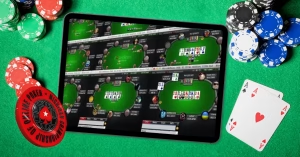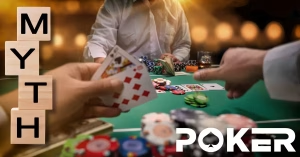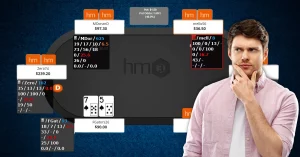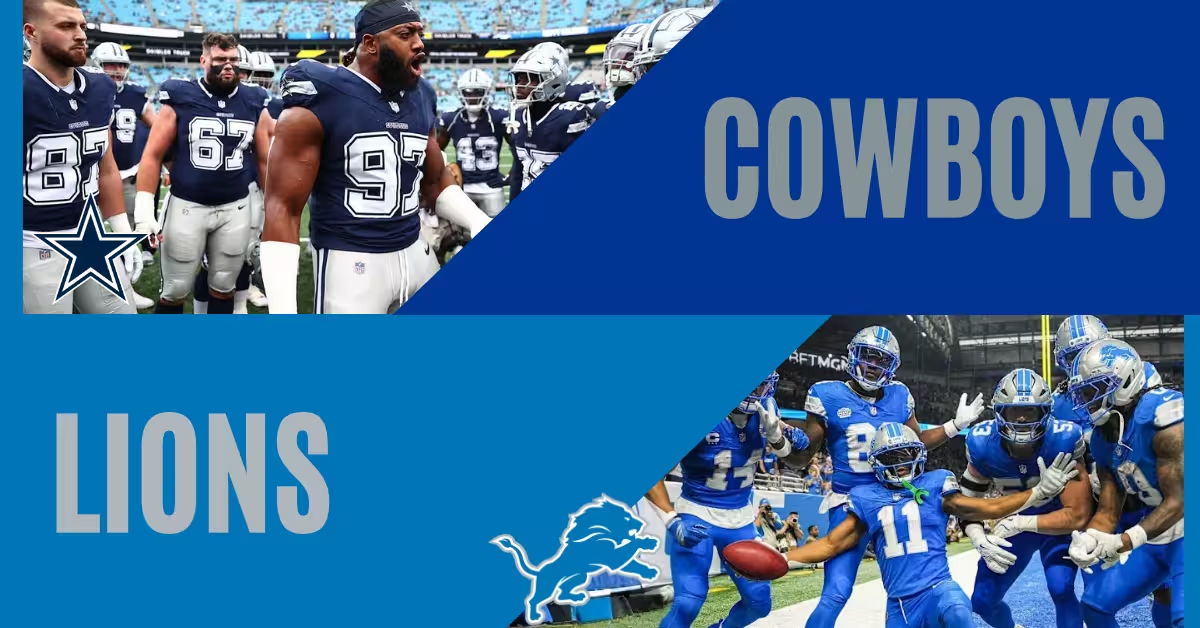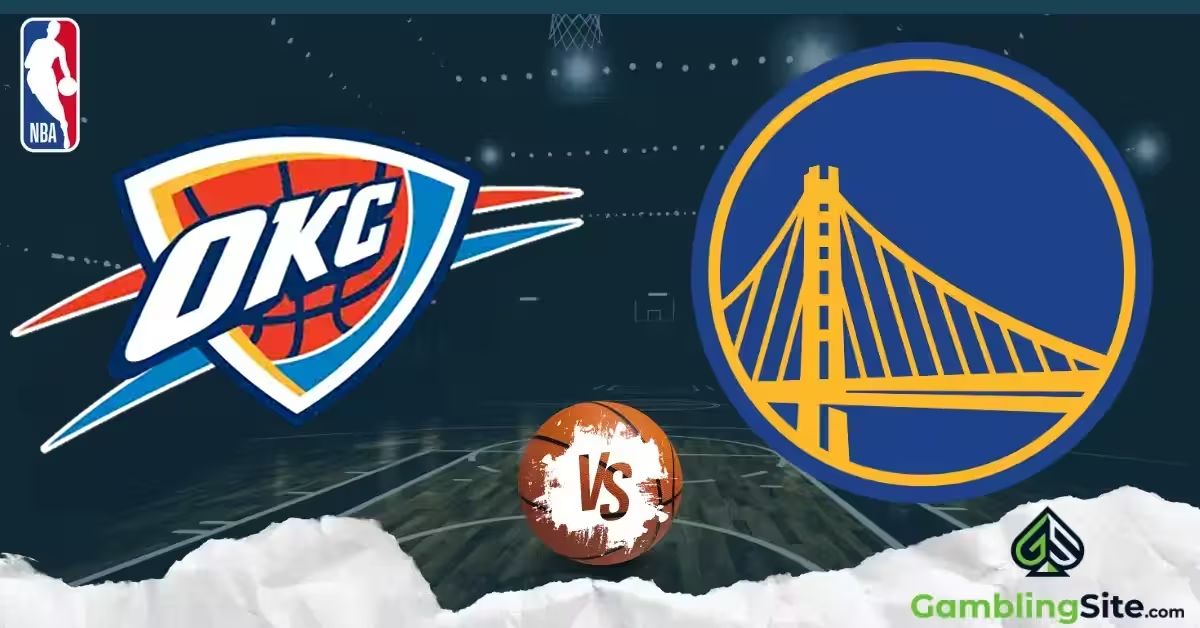5 Tells Unique to Online Poker – And How to Spot Them
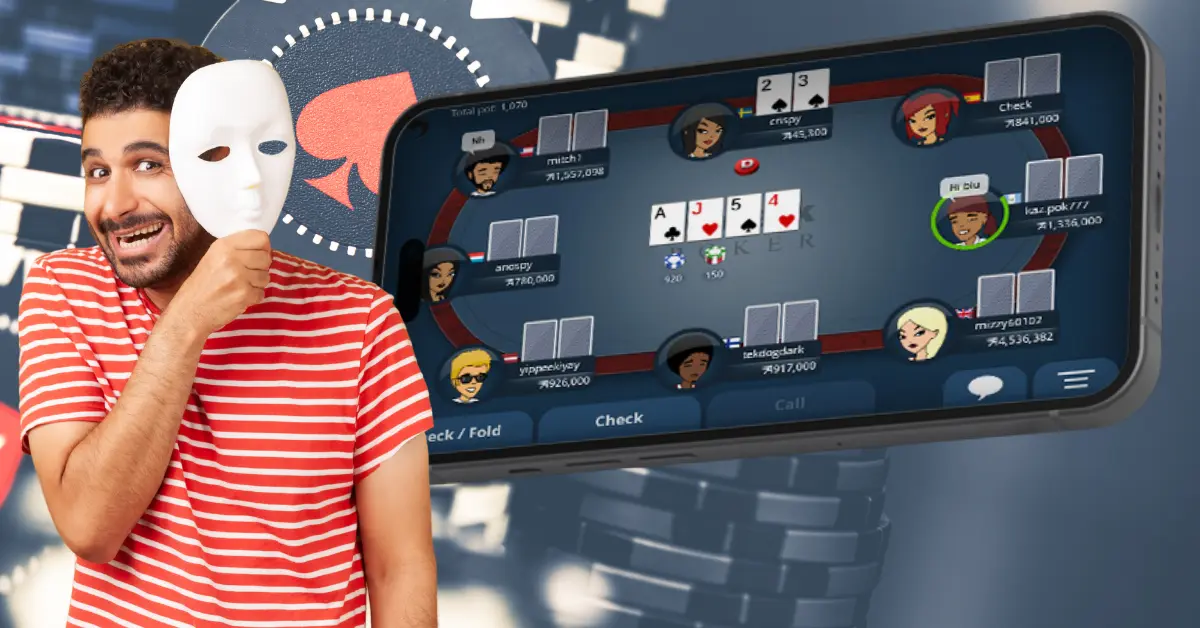
If you think that poker tells only happen when you are sitting across the table from an opponent IRL, you are sorely mistaken.
Just because you can’t see anyone’s smirk through the screen doesn’t mean that online poker is a tell-free zone. As a matter of fact, in the digital realm? The clues just appear in different ways.
In the absence of physical ticks or behavioral giveaways, online poker tells take on the form of patterns and actions by players that inadvertently expose info about their hand.
Oopsies! If you can see a twitchy eyebrow giveaway, the info can manifest in how someone clicks or types.
There are five main online-only tells that we are going to explore, from reaction times to chat habits, and we’ll tell you how you can sniff them out. Get ready to read ’em without seeing ’em: Speed of play, bet sizing and chat behavior, multi-tabling slips, and even the quick-click buttons are all possible online tells!
What Is a ‘Tell’ in Online Poker?
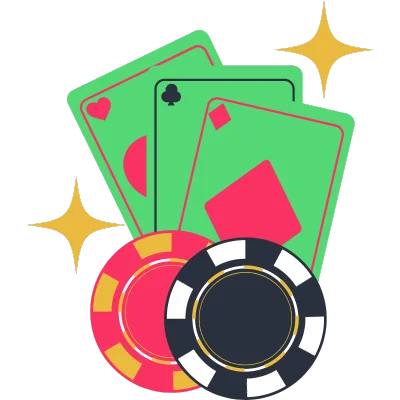
A tell in poker is any change in a player’s behavior that gives clues to their hand. In a live game, it might be a nervous glance at the flop or a shaky breath after a bluff. Online, the facial tics are gone, but the principle is the same. You’re still reading behavior, just of the software kind. Online play strips away body language and replaces it with “betting patterns, timing, bet sizing, reaction speed, and chat behavior” as the windows into someone’s cards. In practice, that means a quick fold or a last-second call is the equivalent of a person fiddling with their chips or taking a deep breath.
For example, even with anonymous screen names and no facecam, you can often profile players by their habits: perhaps one player always waits the maximum time on every street (suggesting a distracted multitasker), whereas another clicks confidently within a second (suggesting they’re autopiloting or sure of their hand). As one strategy guide notes, online pros develop “much less behavior to study,” but the underlying dynamics are the same – you just have to look for the clock-tells instead of physical tells.
Definition of a ‘Tell’
Simply put, a tell is a habit or behavior – any involuntary (or voluntary) cue – that reveals information about a player’s hand. In live poker, that could be scratching an ear with pocket rockets. Online, it might be milliseconds: does someone always quick-fold garbage preflop? Do they often delay big raises? Every little pattern can count.
The Key Is Perspective
Any change from someone’s baseline play could be a tell. A serious player who never chats might be a grinding professional, while one who suddenly litters the table chat with emojis or trash talk might be on tilt (or very strong and relaxed). The digital cues aren’t as flashy as body language, but they can be powerful if you know what you’re looking for.
Clues Beyond the Face
In an online poker room, your “reads” come from the little things. Each click sends a message. For instance, one site explains that if a player tanks on every decision, it often means they’re either a clueless newbie or multi-tabling with too much on their screen. Conversely, an instant fold or check often means they have pre-set that action, usually because they have a terrible hand and couldn’t be bothered. The old live-school tells aren’t gone, they’re just hiding in your software.
As a PokerTube guide advises, you must “rely on betting patterns, timing… and chat behavior to gather clues” when you can’t see opponents’ faces. In short, a poker tell is anything unusual in someone’s play, and online, that often looks like the clock or the chat box rather than body language.
Tell #1 – Speed of Play
The first digital tell? How fast (or slow) someone acts. Timing is everything. In online poker, the clock is one of your main opponents, and players unconsciously use it to communicate. Quick moves usually mean something very different than lengthy pauses.
When a player snaps off a fold or call, they’re often “checking out” of the hand. Instant checks and folds almost always scream weakness. If someone clicks check at once (often via a pre-action setting), they probably had trash in the big blind and have written you off. Borgata’s online guide bluntly explains that a quick pre-flop check usually “indicates a weak hand and an impatient player.” Likewise, PokerTube warns that instant folds usually come from autopilot: the player has already decided to give up. In practice, if you see the clock barely tick before they click fold, you can often bluff more freely – their mind was already made up.
Interestingly, lightning-fast calls can also be telling. The poker author Zachary Elwood notes that very quick calls are typically medium-strength hands. The logic: with a monster, most people pause to consider a raise; with garbage, they’d usually fold (not call quickly). So a rapid call often means “this player isn’t folding or raising with confidence,” so they’re probably holding something like a mid-level pair or draw. In short, if a player acts as fast as possible to put chips in, assume they weren’t super happy about it – they just opted to take a cheap shot. The surprise is that very strong hands also sometimes snap-check (this is an exception, like check-raising traps), but generally, speed is a sign of relative disinterest.
On the flip side, the player who suddenly goes tank is often the scary one. In live poker, a long stare-down is obvious; online, it’s the on-screen timer that blinks. If someone thinks for a while before acting, they’re probably wrestling with a big decision, often one involving a good hand. Pokertube notes that “a long pause before betting may signal a player trying to appear weak or struggling with a decision when, in reality, they are holding a strong hand.” Similarly, the Borgata blog highlights that when a player tanks and then suddenly shoves, it usually means they had an extremely strong hand all along.
Sometimes, tricky players even tank on purpose to disguise strength, then shove at the last second. One 888Poker guide describes this: some pros intentionally let their time bank nearly run out before pushing all in, hoping their late shove looks weak and induces a call. Moral of the story: When an opponent pauses dramatically, be very careful. They may be methodically calculating a call with a monster or setting up a check-raise trap. By contrast, a pre-action check-or-fold that comes too quickly is almost certainly them surrendering. In short, hesitation often equals potency online, whereas instant actions often equal passivity.
Tell #2 – Bet Sizing Consistency
The next tell is how someone sizes their bets. Online players often inadvertently reveal what they have through bet patterns – and not just with how much they wager, but how consistently they do it.
Pay attention to “out-of-character” bets. If a player normally plays big and suddenly min-bets the flop, something is up. That small bet might be them fishing (marginal hand) or hoping to keep you in with a weak punt. Our strategy suggests asking yourself this: Has your opponent bet small when he usually bets large?” If so, it could be a sign of weakness, or perhaps an attempt to feel out the table.” In other words, a tiny bet from a typically aggressive player is fishy – maybe they have a dud and are just taking a flier.
Conversely, if someone who usually plays it safe starts plunking down $20 into a $5 pot, alarms should blare. PokerTube notes that a sudden oversized bet is often a scare tactic – “trying to scare opponents into folding,” i.e., a big bluff. As they explain, if a player suddenly makes a far larger wager than normal, they’re often barreling a bluff at you. (Of course, be wary of the very skilled who might flip that – some pros will use a mega-bet with a monster hand to look like they’re bluffing. But at the smaller stakes, big bets usually mean big lies.)
Even bizarre, odd-sized bets can be clues. For example, the Borgata guide mentions that if someone makes a funky all-in overbet (like shoving 80BB into a 30BB pot), it usually means a very strong hand – players rarely risk that much on a whim. And if you see someone consistently making the minimum bet, it’s a dead giveaway they’re likely on a draw, not slowing down the game. In practice, it pays to track each opponent’s “default” bet amounts with your HUD or notes: if they mostly shove or lead at 60% pot and then suddenly drop to 20%, you can bet that break in pattern is giving you information.
Inconsistent bet sizing is a huge red flag online. If a regular bluffs by overbetting, call it out. If a player underbets, suspect weakness. Tools like HUDs or plain-old table notes can help you remember these patterns. Watch for repeats: the next time they under-bet or over-bet, compare it to what you know. That size change is often where the secret is. As with all tells, don’t obsess over one occurrence, but keep an eye out for recurring sizing quirks. If it happens twice, you’re likely onto something.
Tell #3 – Chat Behavior (or Silence)
Even though chat boxes can be disabled, what players say (or don’t say) can be a tell. The online table chat is basically a digital version of trash talk or bragging at the table. Lean in when you see it.
Some players try to use the chat to throw opponents off balance, and that often reveals their mental state. Poker legend Zach Elwood observes: If a player is chatting while they have a big pot and are betting aggressively, it’s a sign that they feel comfortable, and are likely holding a strong hand. In his words, “if they’re betting and goading you in chat, that’s a pretty reliable sign of strength and relaxation.” If a player is typing in chat to taunt you while firing off raises, they are probably flexing a monster. And if someone is loudly trash-talking after flopping nuts, they might indeed have ’em. But be really careful: some pros will fake confidence to lure you in, so always combine chat with other reads.
The players who feel weak or tilt usually reveal it via chat. If someone suddenly goes on a soliloquy after losing a hand, venting frustrations, or predicting the deck’s next card – that’s a tilt dialed to 11. PokerNews notes serious players usually shut up, whereas recreational players “may engage in conversations or vent frustrations” during a session. So watch for that whiny “I’m too old for this” or “OMG what the heck,” they’re mad and likely not thinking straight. A braggadocious opponent might actually be hiding desperation, while the silent type might be a pro who keeps his mouth shut when he’s strong or weak. The key is this: if someone starts typing, ask yourself why.
What about over-friendliness? If a player starts chit-chatting like they’re at a friendly home game (“nice flop!” “glgl!”) when they’re out of position or not the bettor, Elwood points out that’s a tell of weakness. In short, non-aggressors who suddenly chat often have nothing. He notes, “Someone who chats when the pot is small, or when they’re the non-aggressor – waiting to act, or checking, or calling – will tend to be on the weaker side.” So, if while sitting next to you on the table, a player suddenly starts joking about their grocery list instead of focusing, treat it as a tip-off: they probably aren’t planning a big bet anytime soon.
The practical advice? Don’t let chat tilt you. You can mask frustration too (use the same “lol” and “nice try” if you bluff). And you might even bait them: feign confidence in chat to get a reaction. But mostly, the chat box is used as an extra sensor. The poker old-timer who says, “Everyone’s bluffing in chat,” isn’t quite true; it’s all in the type and timing of the messages.
Tell #4 – Multi-Tabling Slips
Here’s a really special online tell: the giveaway habits of multi-table players. Multi-tablers juggle several games, so their timing and attention can slip. “Clocks don’t lie,” as they say.
If you notice that a player is taking exactly the same amount of time on every street, often hitting auto-pilot buttons, they might be multitabling or distracted. The Borgata guide flags a dead giveaway: a player who “takes an inordinate amount of time on every decision” is often a novice or someone with too many tables open. In other words, their brain is just slow because it’s busy elsewhere. Watch for huge timers consistently; it usually isn’t contemplative thinking, but a lag due to juggling.
Another tip: auto-folds and auto-checks can signal a multitabler. Pokertube bluntly says an instant fold “suggests the player is multi-tabling or not paying close attention.” And 888Poker adds that someone who uses auto-call constantly “may not be thinking about their hands” and could be exploitable. In short, if you see someone folding or checking faster than it takes to blink, they probably gave up before their turn (maybe because they needed to answer that text).
Once you identify a multi-tabler, you can exploit it. If a player is auto-piloting (auto-calls or auto-folds) on every street, you can pump up pressure: make them think faster. For example, if you noticed them quickly calling any half-pot bet, try jamming an all-in against them – they might still click call without thinking. Conversely, if they tank every street, you might try tapping them with small bets to see if they eventually fold. The general rule is to adjust your aggression and timing: either speed up your game to test their commitment, or slow down to let them waste more clock. In all cases, be mindful: multi-tabler tells are tells, but they can also cause oddball mistakes. Watch for patterns in their play – if they always tank or always click one of the auto-buttons, that’s a reading in itself.
Tell #5 – Instant Check or Bet Buttons
Finally, there’s a subtle but potent tell buried in the interface: the quick-action buttons (like “Bet Max” or “Check/Fold”). How people use these can reveal their intentions.
Pay attention when players hit the quick-click options. If you see a player snap-check or snap-bet by a single mouse click, it often means they’re on autopilot (or very sure). Pokertube explains that an instant check usually means they had preselected that action – a classic sign of a weak hand. Similarly, an immediate bet via a “bet quick” button could mean they’re just clicking through a bluff or continuing a loose line. In essence, if someone is clicking faster than their connection speed, assume they’re not deliberating.
Of course, a snap bet might also mean a strong hand (they don’t need to think), so use caution. But the biggest culprit is the auto-check/fold. If you catch a player hitting “Check/Fold” without a pause (especially on the flop or turn), you can safely assume they’re folding to any real pressure. Essentially, the moment they press that button, they’ve already decided to move on. That gives you the license to fire at them, knowing they’ve mentally left the pot.
Be aware: players who rely on these quick buttons tend to have predictable patterns. Pokertube warns that “players who consistently use these automated features tend to follow predictable patterns.” This means you can sometimes decode their line of play. For example, if someone always clicks max-bet on all streets, they could be artificially polarizing their range. Or if they always quick-fold to min-raises, you know you can steal a blind from them. Essentially, treat excessive use of auto-actions as its own tell: a very weak or scripted game.
In short, don’t be lazy about the clock or the action buttons. If you see the dealer’s hand freeze for a long time and then poof an immediate click, you’ve got info. Likewise, if someone keeps clicking the same “Raise” button in a heartbeat, they might be bluff-happy. Use these gadget cues to tilt the odds in your favor.
How to Track and Use Online Tells Effectively
Spotting a tell is great, but tracking patterns over time is how you turn those observations into profit. You can’t trust a single data point – you need a history.
Keep Tabs Like a Pro
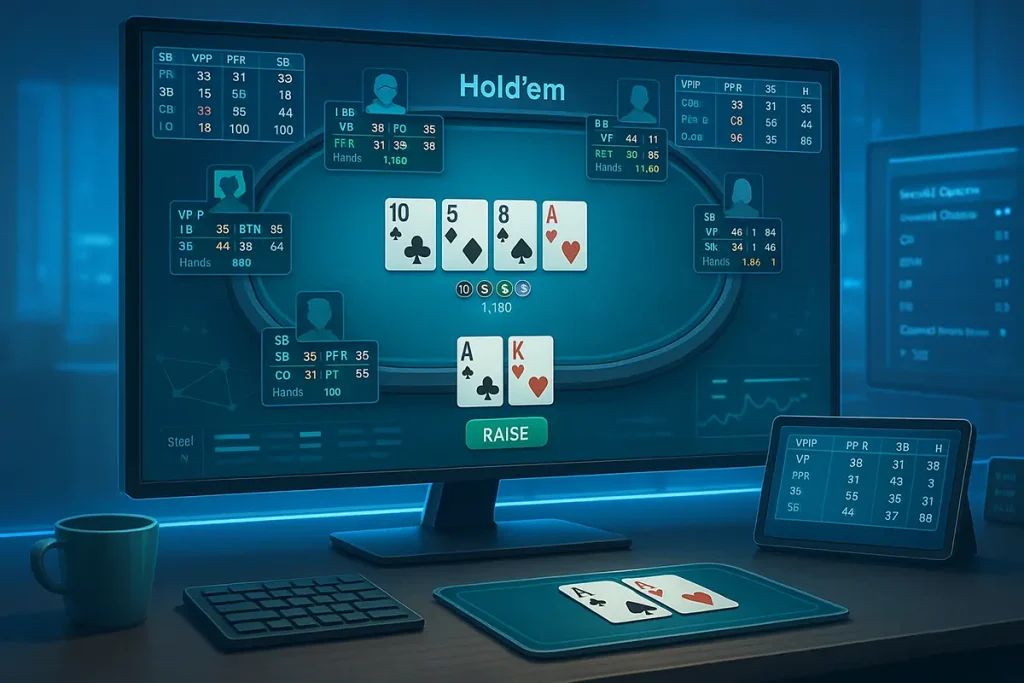
Use every tool you’ve got to keep notes on opponents. Most sites let you tag or note players; use it religiously. As one online strategy guide explains, keeping notes is key: “Using a site’s player notes or keeping them yourself can help track opponents’ play and idiosyncrasies. You can also make a note of timing and bet sizing tells or overall player tendency changes.”
In practice, maybe note that “BlueJoker9 tanks 15s every action, insta-folds to 3-bets.” Or “LadyLuck22 bets 50% pot with all pairs.” These little data points accumulate and give you a statistical edge later.
Heads-Up Displays (HUDs) are the ultimate form of this. HUD stats will tell you if someone fast-folds too much or overbets suspiciously often. But don’t be lazy: a HUD without interpretation is like a book you haven’t read. Use it to confirm what you see, not replace your eyes. If you see someone’s “Quick-Fold” stat is 80%, go in knowing that table chat will have even more opportunities to bluff them.
Patterns, Not Panic
The most important tip is not to overreact to a one-off. If someone pauses long only once, don’t call 911 on that. “Tells will be even rarer,” reminds Elwood, and they “should be a very small piece of your poker arsenal.” Don’t panic or tilt yourself because of it. Instead, stay calm and watch if the behavior repeats.
For example, one quick bet after folding your fishy bluff might mean nothing – maybe their cat jumped on the keyboard. But if they do it three times, you have a tell. Over time, build mini-profiles: “Oh, PokerMike always thinks 20+ seconds before river bets,” or “QueenOfHearts87 loves the chat when she’s bluffing.”
Always pair tells with a solid strategy. An identified tell alone isn’t a winning hand, but used correctly, it’s an extra chip. And remember, just as you watch them, some shark might be watching your timing too. So mix up your speed, use those mouse-click tools wisely, and keep some ambiguity. The moment you rely on reads alone and stop playing the cards, you’re giving them a tell on you.
Conclusion: Read ‘Em without Seeing ‘Em
Online poker tells can be hard to spot because they’re so subtle, but if you catch them? They can be powerful allies if you are able to notice them. Tracking timing patterns, bet sizes, the chat vibes, and how opponents use buttons will turn invisible clues into real edges. Even if you spot just a single predictable behavior from an opponent, like they always insta-fold to small raises, it can change your win rate in the long run.
Look below for a quick refresher on the five tells that are unique to online poker:
- Online tells are really subtle but can be powerful! They are usually hiding in the clock or chat, not in a mouth twitch.
- Tracking behavioral patterns can give you a real advantage. Notes and HUD stats will turn any fleeting observations into actionable reads.
- Mastering even one tell can change your win rate! If you know that a player is weak when they quick-fold, you can bluff way more profitably.
- Combine tells with a sound strategy, not in place of it. Tells are only one piece of your poker arsenal, not a decent strategy.
- Be observant: Why? Because just like you’re watching, someone is probably watching you, too! Online tables are fishbowls, so be as slick as possible with your playing style.
When you pay close attention to the unique online tells and stay level-headed, you’ll learn to read opponents without having to see their faces. In the virtual felt of the internet, you can’t see them sweat, but you can read the clicks. Stay sharp and use those tells to clean up the rake!
If you want additional help with your poker play or just want a simple way to find helpful information about playing, be sure to check out our Poker Cheat Sheet to get you started.

Alyssa contributes sportsbook/online casino reviews, but she also stays on top of any industry news, precisely that of the sports betting market. She’s been an avid sports bettor for many years and has experienced success in growing her bankroll by striking when the iron was hot. In particular, she loves betting on football and basketball at the professional and college levels.

